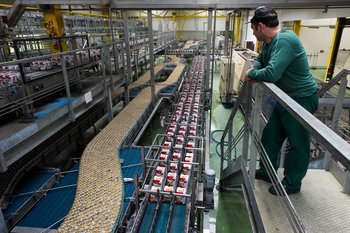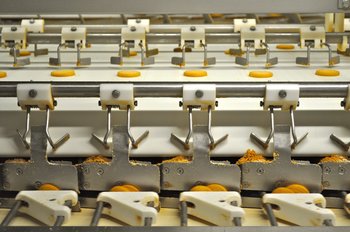
Economies of Scale
Economies of scale are cost advantages that a firm enjoys as it produces more. This tends to benefit large firms. For example, a small bakery that produces 1,000 loaves of bread a day may have a unit cost of $1.50. A larger bakery that produces 500,000 loaves a day can push suppliers for cheaper ingredients, automate parts of the production process and produce larger batches. This may allow the larger firm to have a far lower unit cost such as $0.50 per loaf.Diseconomies of Scale
Economies of scale can have a limit whereby increasing production beyond a certain point can result in a higher unit cost. For example, a coffee producer may be able to grow 100 tons of coffee for $1 a pound. Beyond that, it gets harder for the firm to procure land and resources and cost per pound begins to rise such that 200 tons of coffee would cost the firm an average of $3 a pound.Ideal Firm Size
Ideal firm size is the size of company in a given industry that results in the lowest unit costs. For example, an IT consulting company with 200,000 consultants may have the lowest cost per hour of consulting in the industry. Smaller firms may find it more difficult to recruit because they offer less status and stability. Larger firms may face intense office politics and bureaucracy that make them less agile and cost efficient.Minimum Efficient Scale
In many cases, ideal firm size isn't a specific number but a large range whereby firms at a similar level have similar unit costs. Minimum efficient scale is the size that you need to get into this range to compete on cost. For example, all shoe manufacturers that produce over a million units a month may have similar costs with smaller producers having higher costs. In this case, a small firm would find it difficult to compete on price until they approach a million shoes a month in sales volume.| Overview: Production Scale | ||
Type | ||
Definition | The volume of a product or service that a single firm produces. | |
Related Concepts | ||


























